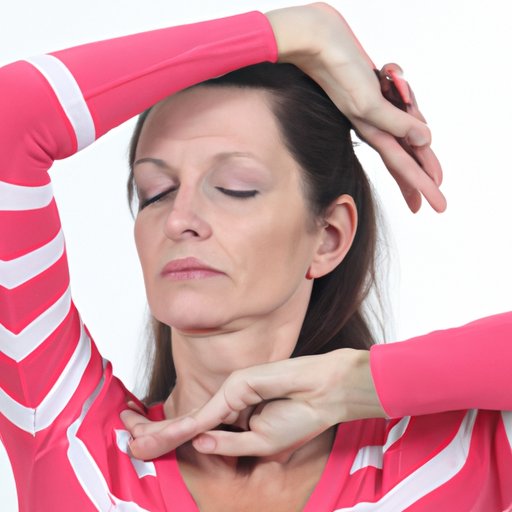
Introduction
Face pulls are a powerful exercise that can help you work out the muscles in your upper back, shoulders, and neck. They are particularly important for people who spend a lot of time sitting in front of a computer or engaging in activities that put stress on the upper back and shoulders.
Step-by-Step Guide
The first step to performing face pulls is to ensure that you have the proper equipment. This includes a cable machine or resistance bands and a rope or handle attachment.
To begin the exercise, stand facing the cable machine or resistance bands with your feet shoulder-width apart. Grip the cable or resistance band handle with both hands, keeping your palms facing inwards towards each other. Your arms should be fully extended, and your hands should be positioned at or above shoulder height.
From this position, pull the cable or resistance band handle towards your face, keeping your elbows high and in line with your shoulders. Squeeze your shoulder blades together as you pull the cable towards your face. Hold this position for a few seconds before slowly lowering the handle back to the starting position.
Repeat this movement for the desired number of repetitions or as recommended by your workout routine.
If you are new to face pulls or want to ensure that you are performing them correctly, it can be helpful to watch videos or look at pictures of the exercise to ensure that you are using proper form.
Benefits of Doing Face Pulls
There are several benefits to incorporating face pulls into your workout routine.
Improved posture
Face pulls can help improve your posture by strengthening the muscles in your upper back. This can help reduce the risk of developing rounded shoulders or a hunched posture, which can lead to neck and shoulder pain over time.
Strengthened upper back muscles
Face pulls are an effective way to strengthen the upper back muscles, including the rhomboids, trapezius, and rear deltoids. These muscles are essential for good posture and shoulder health.
Reduced neck and shoulder pain
By strengthening the muscles in the upper back, face pulls can help reduce the risk of developing neck and shoulder pain, which can be a common problem for people who spend a lot of time sitting at a desk or engaging in activities that require the use of the upper body.
Injury prevention
Face pulls can help prevent injuries to the upper back, shoulder, and neck by improving the strength and mobility of the muscles in those areas. This can be particularly important for athletes or people who engage in activities that put stress on those areas of the body.
Variations of Face Pulls
There are several variations of the face pull exercise that you can try to target different muscles or switch up your workout routine.
Starting position variations
You can perform face pulls from different starting positions to target different muscles. For example, standing with a slightly wider or narrower stance can target the muscles in the front or back of your shoulders.
Grip variations
Changing your grip on the cable or resistance band handle can also target different muscles in the upper back and shoulders. For example, using an overhand grip can work your rear deltoids more, while an underhand grip can work your biceps more.
Equipment variations
You can also vary the equipment that you use for face pulls. For example, using a rope attachment instead of a handle can change the angle and target different muscles.
Common Mistakes to Avoid
Like any exercise, it’s important to ensure that you are using proper form when performing face pulls to avoid injury or strain. Here are some common mistakes to watch out for:
List of common mistakes
- Allowing your shoulders to slump forward
- Not pulling the handle all the way to your face
- Letting your elbows drop below your shoulders
- Using momentum to perform the exercise
Strategies to fix and prevent those mistakes
To fix these mistakes, focus on pulling your shoulders back and keeping them down throughout the movement. Also, be sure to pull the handle all the way to your face and keep your elbows high and in line with your shoulders. To prevent using momentum to perform the exercise, focus on performing the exercise slowly and with control.
Incorporating Face Pulls into Your Workout Routine
For best results, it’s recommended to perform face pulls at least twice a week. You can incorporate them into your workout routine by adding them at the end of your upper body workout or by doing them on their own as a standalone exercise.
It’s also important to vary the weight and number of repetitions that you do each time you perform the exercise, to ensure that you continue to challenge your muscles and make progress over time.
Conclusion
Face pulls are a powerful exercise that can help improve your posture, strengthen your upper back muscles, reduce neck and shoulder pain, and prevent injuries. With the proper equipment and form, you can start incorporating face pulls into your workout routine today and start seeing the benefits for yourself.
So, don’t wait any longer.




